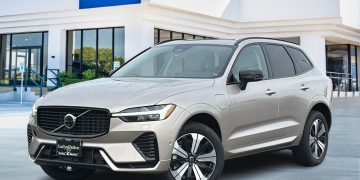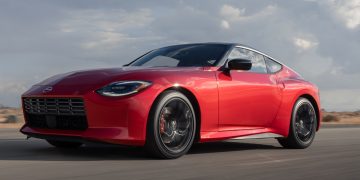Introduction
The rise of electric vehicles (EVs) marks one of the most significant revolutions in the automotive industry. Over the past decade, EVs have transitioned from a niche market to a mainstream alternative to traditional internal combustion engine (ICE) vehicles. As concerns over climate change, environmental sustainability, and the limitations of fossil fuels grow, the demand for cleaner and more efficient modes of transportation continues to increase. In this article, we will explore the electric revolution and its far-reaching effects on the automotive industry. Additionally, we will examine the barriers that need to be overcome for electric vehicles to become fully mainstream, and what these changes mean for both the automotive industry and consumers.
Electric Revolution: Understanding the Shift Toward Electric Cars and Its Impact on the Industry
The transition to electric vehicles is not just a trend but rather a paradigm shift that is reshaping the automotive landscape. The electric revolution is being driven by several key factors, including environmental concerns, advances in battery technology, government regulations, and the shifting preferences of consumers. Let’s take a closer look at how these factors are influencing the automotive industry.
1. Environmental and Regulatory Pressures
One of the primary driving forces behind the shift toward electric vehicles is the need to reduce carbon emissions. Traditional gasoline and diesel-powered vehicles are major contributors to air pollution and climate change, and as the world seeks to reduce its carbon footprint, EVs provide a promising solution. Governments around the world are setting stricter emissions standards for automakers and offering incentives to consumers who purchase electric vehicles. The European Union, for example, has set ambitious targets for reducing carbon emissions from the transportation sector, while countries like China and India are also taking proactive steps to promote EV adoption.
In addition to regulatory pressures, many nations have committed to reaching carbon neutrality by mid-century. Electric vehicles are seen as a key component of these ambitious climate goals. As a result, many automakers are transitioning away from the internal combustion engine and investing heavily in electric mobility solutions.
2. Advancements in Battery Technology
Battery technology is at the heart of the electric revolution. The development of more efficient and cost-effective batteries has made electric cars more accessible to consumers. Early electric vehicles suffered from limitations in range, long charging times, and high costs due to inefficient batteries. However, in recent years, advances in lithium-ion battery technology have significantly improved the energy density, lifespan, and charging speed of EV batteries. This has translated into better performance, longer driving ranges, and lower overall costs for consumers.
Additionally, battery prices have been steadily decreasing, which has played a critical role in making EVs more affordable. In fact, the cost of lithium-ion batteries has fallen by over 80% in the past decade, making electric cars more competitive with traditional vehicles. As battery technology continues to improve, we can expect EVs to become even more efficient and affordable, which will drive mass adoption.
3. Emergence of EV Manufacturers and Increased Competition
As demand for electric vehicles has surged, the automotive industry has witnessed the emergence of new players and increased competition in the EV market. Tesla, the leading electric vehicle manufacturer, has demonstrated the viability of electric cars in a mass-market context and has revolutionized the automotive industry with its high-performance, long-range EVs. Tesla’s success has encouraged traditional automakers such as Volkswagen, General Motors, and Ford to accelerate their own electric vehicle development programs. Many of these manufacturers are planning to release new electric models in the coming years and are investing billions of dollars in EV technology.
At the same time, start-ups like Rivian, Lucid Motors, and NIO have entered the market with innovative electric vehicles that cater to specific segments, such as luxury and off-road EVs. The increasing competition between established automakers and new entrants is accelerating the pace of innovation and pushing the industry toward a future dominated by electric cars.
4. The Role of Charging Infrastructure
The development of an extensive and reliable charging infrastructure is essential for the widespread adoption of electric vehicles. In many regions, the availability of charging stations is still a limiting factor for potential EV buyers. However, as governments and private companies invest in building out charging networks, the accessibility of charging stations is improving. Companies like Tesla have pioneered the development of high-speed Supercharger stations, which allow Tesla owners to charge their vehicles quickly and conveniently on long trips.
Other automakers, including Volkswagen and BMW, are also working to expand the global charging infrastructure. Furthermore, home charging solutions are becoming increasingly common, making it easier for consumers to charge their EVs overnight. As charging infrastructure continues to grow, range anxiety—the fear of running out of charge on the road—will become less of an issue, further encouraging adoption.
Consumer Adoption: What Barriers Need to Be Overcome for Electric Vehicles to Become Mainstream?
Despite the significant progress made in the electric vehicle market, there are still several barriers that need to be overcome before EVs can achieve full mainstream adoption. Understanding these challenges is key to predicting the future of electric vehicles and the automotive industry as a whole.
1. High Upfront Costs
Although the prices of electric vehicles have been decreasing in recent years, EVs are still generally more expensive than their internal combustion engine counterparts. This price difference is largely due to the high cost of batteries, which make up a significant portion of the vehicle’s price. While governments offer incentives to reduce the cost of EVs for consumers, the upfront cost remains a major obstacle for many potential buyers.
However, as battery prices continue to fall and economies of scale kick in, the price of electric vehicles will likely come down further, making them more accessible to a broader audience. Additionally, the total cost of ownership of an electric vehicle—considering factors like lower maintenance costs and fuel savings—often makes EVs more economical over the long term.

2. Limited Driving Range
Although the range of electric vehicles has improved dramatically, it is still a concern for some consumers, particularly those who rely on their cars for long road trips. Most modern electric vehicles offer ranges of 200 to 300 miles on a full charge, which is sufficient for daily commuting and city driving. However, for consumers who drive long distances regularly, the limited range can be a barrier to adoption.
The development of next-generation batteries with higher energy densities, along with the expansion of fast-charging networks, will help address range anxiety. Additionally, innovations such as ultra-fast charging technology could enable drivers to recharge their EVs in as little as 15 to 20 minutes, making long-distance travel more convenient.
3. Charging Time and Infrastructure Limitations
While home charging is convenient, the time it takes to charge an electric vehicle can be a barrier for some consumers, particularly those without access to home charging stations or in areas where charging infrastructure is sparse. Charging an EV can take several hours when using standard home chargers, and even fast chargers may require 30 minutes or more to provide a significant charge.
To overcome this barrier, fast-charging networks need to expand and improve in terms of convenience, cost, and accessibility. As mentioned earlier, companies like Tesla and other automakers are already working on building out the infrastructure needed to make long-distance travel easier for EV owners.
4. Consumer Perception and Lack of Knowledge
Despite the benefits of electric vehicles, many consumers remain unaware of the full range of advantages offered by EVs. For example, some consumers may still believe that electric cars are slow, unreliable, or impractical for everyday use. Misconceptions like these need to be addressed through education and outreach campaigns, as well as firsthand experiences through test drives.
As more people experience EVs and learn about their capabilities, such as impressive acceleration, quiet operation, and low maintenance, the perception of electric vehicles is likely to shift. Increased exposure to EVs in media, advertisements, and dealerships will help break down these misconceptions and encourage wider adoption.
5. Supply Chain and Manufacturing Challenges
The transition to electric vehicles also presents significant challenges for automakers in terms of supply chain and manufacturing. The production of batteries and electric drivetrains requires specialized materials such as lithium, cobalt, and rare earth metals, which are subject to fluctuating prices and supply chain disruptions. Automakers must invest in secure and sustainable supply chains to ensure a consistent and affordable supply of these critical materials.
Additionally, manufacturers need to retool their factories and workforce to accommodate the production of electric vehicles, which requires a different set of skills and processes compared to traditional vehicles. The shift to EV production also involves overcoming legacy infrastructure and ensuring that new EVs are competitively priced while maintaining profitability.
Conclusion
The shift toward electric vehicles is one of the most significant developments in the automotive industry in recent decades. The electric revolution is not just about reducing emissions—it’s about transforming the way we think about transportation, energy, and the environment. While there are still several barriers to overcome before electric vehicles can achieve full mainstream adoption, the progress made thus far is promising.
Advances in battery technology, the growth of charging infrastructure, and increasing consumer awareness are all contributing to the rapid rise of EVs. As automakers continue to invest in electric mobility and work to overcome the challenges of high upfront costs, limited driving range, and infrastructure limitations, we can expect electric vehicles to become a mainstream choice for consumers around the world.
As the automotive industry adapts to this new reality, it will continue to drive innovation, improve sustainability, and shape the future of transportation. The electric revolution is not just changing cars; it’s changing the way we live, work, and travel.


































Discussion about this post